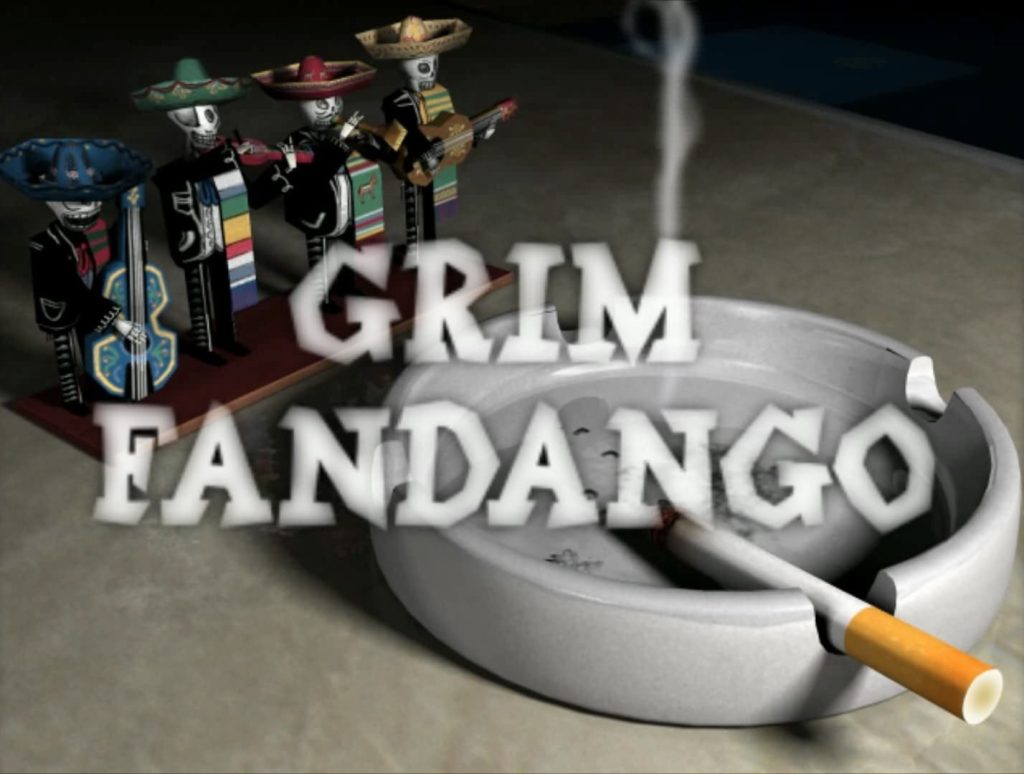“We may have years, we may have hours, but sooner or later we all push up flowers.”

You have to be serious about a noir film. That kind of cynicism and brush up with hard-boiled reality isn’t pure escape. You might get a happy ending, sure—but then you might also hear whispers of “forget it, it’s Chinatown.” There’s a lot of prestige tied up in the genre, and there’s no messing around with just how introspective and bitter its narrative explorations can get. The leading man, one way or another, is always playing it Bogart—drawing on that rich pedigree of cynicism, with a thousand-cigarette stare and suit smelling of gin as his best companions. There’s always a woman too. Always. She’s hiding something, but is more than a match for the shamus, gangster, or cop opposite her.
Noir is as serious as it comes. The turns and endings are often difficult, the visuals unseen by resplendence or sunlight, its world jaded and byzantine. Can you take it seriously if the medium and delivery are far different, though?
It’s the Day of the Dead, except that every day is the Day of the Dead. Art Deco with Aztec motifs abound, like if Tenochtitlan survived into the 1930s. The graphics (yes, graphics) are old. Very old. Not Atari old, but of a vintage that now surpasses care for that sort of minutia. Much as it tries to play it straight noir, there’s a bit of levity and comic relief now and again. The walking, talking skeletons are absurd enough to warrant that. There’s no silver screen or ticking 35mm reel, just the flickers of an old CRT running Windows 95.
And now we dance the Grim Fandango.
It’s an odd artifact, Grim. This isn’t what most people today think of when they think ‘video game.’ It’s not a mindless time-sink you’re supposed to kick your feet up and casually enjoy. It’s also not a high-fidelity prestige production with the pretensions of purchasing legitimacy for the medium and winning its contested aspiration towards art. Grim’s an old point-and-click—a genre as anachronistic as the game’s pre-rendered backgrounds and blocky graphics. It’s carried almost entirely by its narrative, with some puzzles in between to satiate the urge for player input. “Something is rotten in the land of the dead,” reads the tagline.
And rotten it is. It seems that even after souls are turned to dust and enter a purgatory whose absolute simplicity of purpose is to reach a seat of eternal rest (after a four-year journey through this very land of the dead), they’ve still not shed their more human appetites for greed and peddling. The fantastical elements of it all make the familiar winding tale of uncovering a conspiracy all the more of a draw. The studied urgency of the writing and the heft of its plot turns keep it from falling into the trap of just another petty game with tepid dialogue.
That’s the thing with Grim: it walks that line where it can leverage the casual and relaxed sphere of its video game roots, but also have more creative aspirations towards telling a good, straight noir, even if some of the beats end up being derivative. It’s not too serious about itself. It knows that talking calaveras living in a purgatorial, Interwar city are rather silly. But it also knows how to push that premise to tell a good story, one carried by its synthesis with filmic influence and sharp, witty writing. It knows it’s a video game, even though it aspires to do more than what the cache of that label constrains it too. You can still enjoy the elaborate puzzles and funny interactions you get by pushing buttons on other characters (in both senses of the phrase). But you also want to stick around to take in the tale of the sardonic skeleton & the demure dame.
Grim came out in 1998. For the longest time, it’s been this niche computer game recalled from the early days of a medium, back when games lacked mainstream stay. Almost a decade ago, there was a remaster—a touch-up and rerelease—that made the game compatible and accessible for a new generation. I was part of that class that ended up stumbling on it later, not quite enjoying it during its obscurity, but remaining a fan even as it retreated from popularity almost cyclically. Grim’s isn’t all that obscure or underrated (it’s ascribed a lot of credit and legacy universally), but today it’s been remade into a cult classic leading a new cult. It’s easy to get into today, even though the game has too outdated a mechanical premise, and too narrow a narrative genre appeal to really warrant that much fanfare and attention.
I realize now that, after singing so much praise, I never really described Grim Fandango specifically enough and spoke of it in clouds of vague commentary. You’ll forgive me that it is a hard thing to describe, though. “Special” is a word we throw around a lot, but special is Grim. It’s a weird artifact that defies what we now consider a video game, but doesn’t really abide by the standards of most noir media. Only a format as obscure as early Windows computer programs in an age before the frontier of video game creativity became more fenced in can really make something that is wildly defiant against classification.
It’s a point-and-click. It’s noir. It’s an adventure game. It’s Casablanca meets Chinatown. It’s an interactive comic. It’s a conspiracy thriller.
It’s Grim Fandango, and you’ll only know it if you try it.
